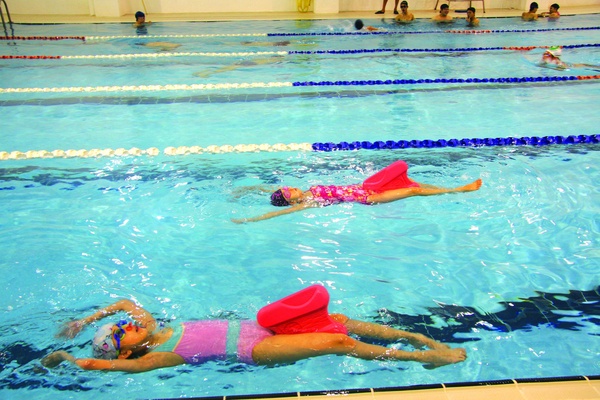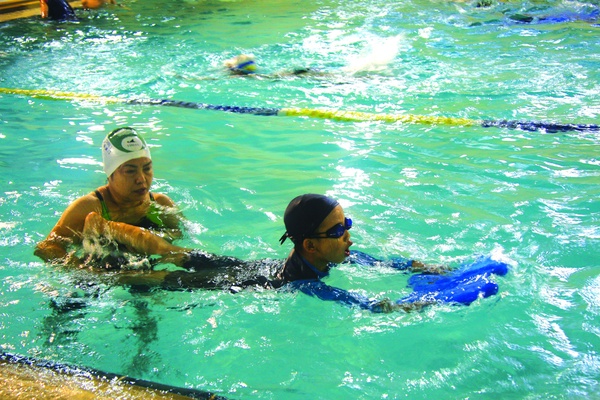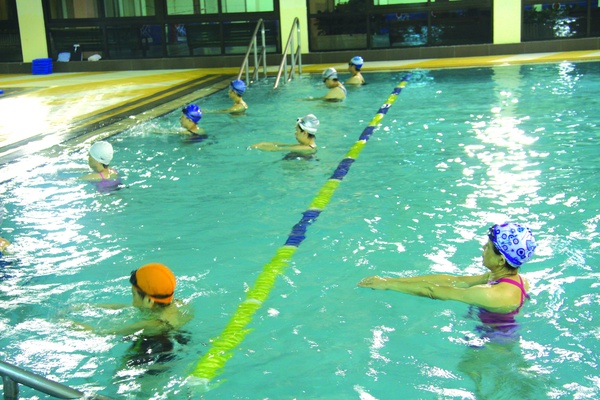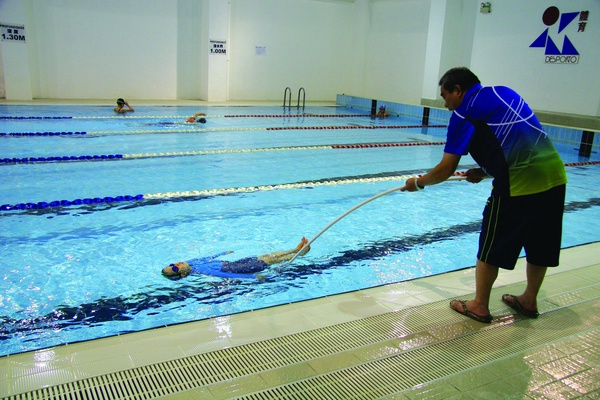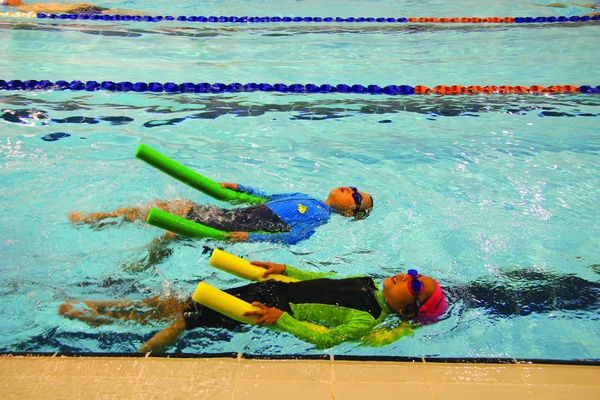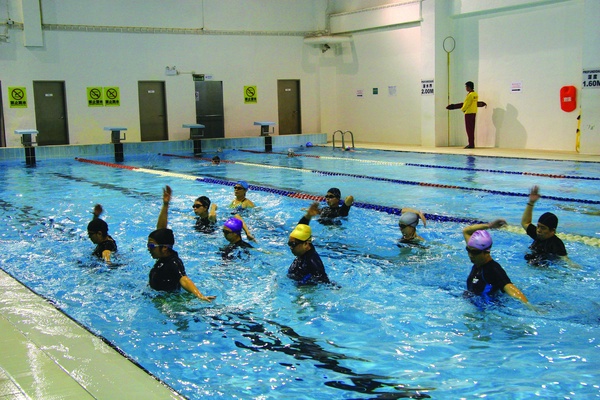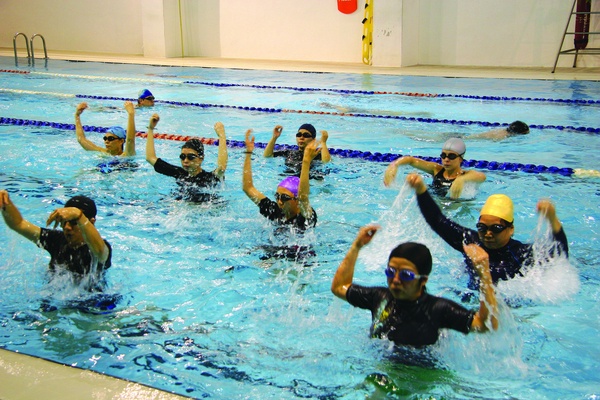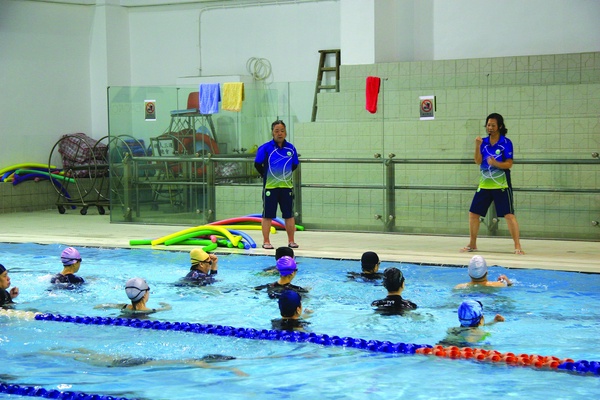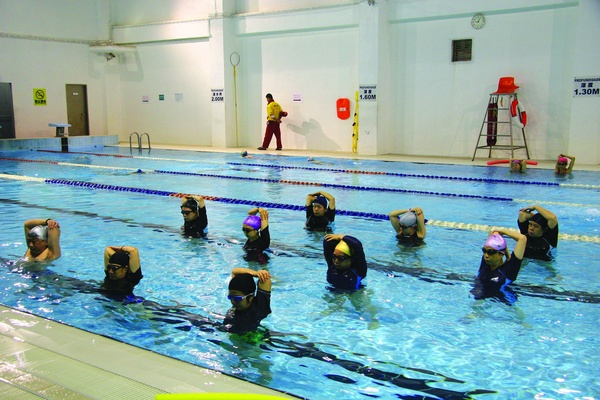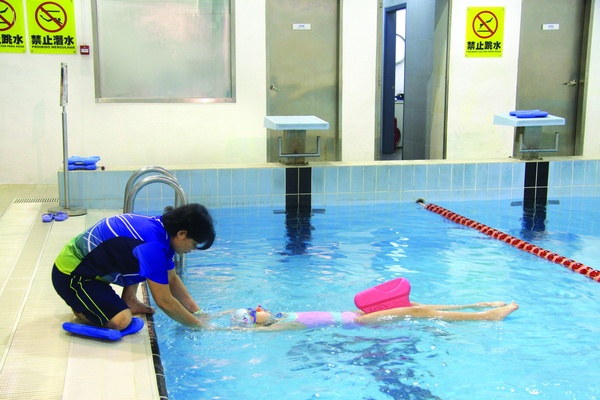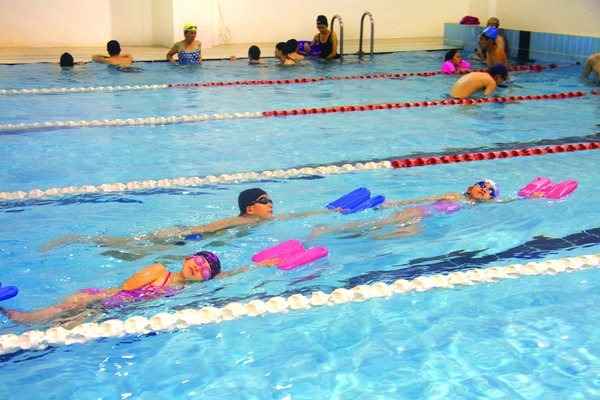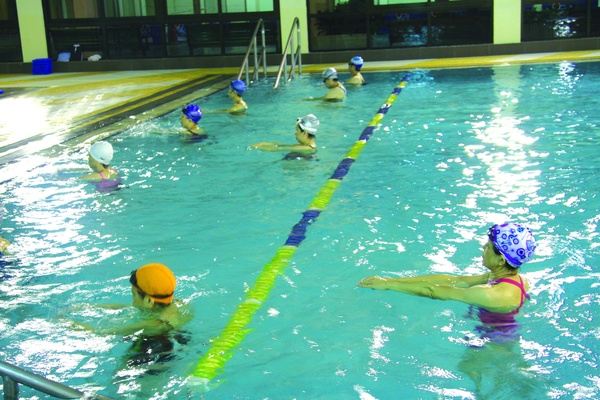Swimming is one of the best sports for fitness. From the perspectives of maintaining health and increasing stamina, swimming is probably the most appropriate exercise among all sports. From the viewpoint of fitness, regular training by swimming can effectively strengthen the body’s conditions and elevate health levels.
Characteristics:
I. Maintaining health:
Swimming regularly can improve the breathing mechanisms of the body. When swimming is done on a continuous basis, it can increase muscular strength, speed, stamina and joint flexibility, giving the body well-rounded conditioning.
II. A group activity:
Swimming can be done individually or as a group. Anyone can participate in the sport of swimming regardless of age or sex.
III. Competitions:
Through swimming competitions and complying with the different rules of competitions, athletes can learn how to overcome difficulties in order to win and can taste the sweetness of victories after all the hard work and training. At the same time, athletes can learn how to face losing in competitions and to stand up again each time without giving up, until they win.
During swimming, different parts of the body and the different organs get a workout due to the water pressure, resistance and buoyancy. Swimming regularly can improve the ability of adjusting the body temperature when the outside temperature of the environment changes. In addition, muscular activities during swimming will burn calories, a process which creates a need for the body to replenish the calories by increasing body metabolisms.
Benefits:
I. Improving cardiac muscle functions:
When we exercise under water, every organ is working and a lot of energy is consumed. The blood circulation speed picks up in order to supply more nutrients to the exercising organs. The increased blood circulation means that the heart has to work harder and the frequency of heartbeats also has to increase with powerful cardiac contractions. Therefore, those who swim regularly tend to have excellent cardiac functions.
II. Increasing pulmonary functions:
Swimming causes the strengthening of the muscles of breathing and a larger chest chamber with increased pulmonary air intake. The aveoli of the lungs open up to a larger extent enhancing the exchange of air and the health of the swimmer.
III. Improving health immunity:
Swimming pool water temperatures range from 26 to 28 degrees and body heat is dissipated very quickly underwater. In order to replenish the lost heat and to balance the heat and the cold, the nervous system reacts quickly to start increasing the body metabolism, which in turn strengthens the body’s ability to adjust to external environments and resist coldness. For those who swim in the winter, because the body temperature moderation abilities are better, it is not as easy to get the common cold and the flu and their endocrine glands functions are improved. The functions of the pituitary gland are better and the body resistance and immunity against diseases is improved.
IV. Protecting the skin:
When we swim, water rubs against the skin, the liver glands, the sebaceous glands, creating massaging effects that increase the blood circulation and gives the skin elasticity and smoothness. Furthermore, exercising underwater reduces the harm on the skin caused by saline in the sweats from exercising on land.
Water walking
Although water walking must be done underwater, but it does not require knowing how to swim, so anyone can learn how to walk in water, including the elderly and those under rehabilitation, as well as for those who cannot swim and those who are afraid to put their face underwater. Regardless of age, anyone can learn how this mild exercise of water walking. Under the relaxed conditions, the body can slowly recover, maintain and condition the muscles that have been atrophied from disuse. Water walking is usually done in navel-deep or chest-deep water. The trainees can choose different levels according to their heights, and the deeper the water level, the higher the resistance in movements. They must choose the right difficulty level of water walking in accordance with their own body conditions.
Brief introduction:
I. Specificity:
Those who exercise by water walking can base on their own age, sex and health conditions, as well as their body reactions during the exercises, when setting the length of time and the movements of water walking.
II. Resistance:
The great water resistance allows the increase in muscular strength and stamina and the gradual recovery and maintenance of the muscles that have been atrophied from disuse.
III. Adjustment ability:
Water can help dissipate the body heat released from exercising and so it is relatively uncommon to find cases of heat strokes after exercising in water, in contrast to exercising on land.
Water walking fully takes advantage of the water resistance and the water buoyancy characteristics. Through water resistance, body strength and stamina can be trained and perfect body shapes can be achieved. Through water buoyancy, the body can develop flexibility and reduce the incidents of sports injuries. With the lower temperature in water and the increased burning of fat from water walking, adequate training can result in less body fat and better figures.
Benefits:
I. Reduce Joint injuries:
The buoyancy of water can greatly reduce the impact of the ground on body joints, protecting the different joints from injuries. In addition, those who have more body fats can exercise underwater with great ease, as compared to exercising on land where they can fatigue very quickly.
II. Increasing muscular strength:
Water resistance can make exercising underwater more strenuous which will increase the metabolism of the muscles and muscular power.
III. Shaping the body:
Walking back and forth at low water levels makes a good work-out due to the water resistance. And because the temperature of water is a bit lower than the surrounding room temperature, water walking consumes more body heat. Prolonged walking in water (over 40 minutes) can help lose weight and sculpt better figures.
Synchronized swimming
Synchronized swimming is a new form of female sports. Combining swimming, techniques, choreography and music, synchronized swimming is also known as water ballet. Its movements are powerful and display great energies and vitalities while its graceful choreographies are a beautiful form of art.
Brief introduction:
I. Maintaining health:
Synchronized swimming works against water resistance and buoyancy and places a great demand on muscular strength and the control over the balancing ability of the body. This is conducive to building up muscular strength. In addition, when performing the movements under water, breathing is normally under the maximum level of stress, increasing the abilities of the cardiopulmonary functions. Holding one’s breath can elevate the tolerance of lactic acid and thus improve metabolism to a certain extent.
II. Beauty:
Synchronized swimming comprises many forms of movements, swimmers form many different kinds of patterns with beautiful music playing in the background while they dance in water, giving the audience nice and relaxing entertainment. Whether it is the movements or the pattern combinations, perfect harmony with the music has to be achieved so that perfect oneness can be seen between form and substance.
III. Competitions:
Through synchronized swimming competitions and complying with the different rules of competitions, athletes can learn how to overcome difficulties in order to win and can taste the sweetness of victories after all the hard work and training. At the same time, athletes can learn how to face losing in competitions and to stand up again each time without giving up, until they win.
Synchronized swimming is a sport that improves mental and physical health as well as tames the temperaments. The combination of patterns, strength, speed and music in one makes this sport very charming and mesmerizing.
Benefits:
I.Improving muscular strength:
Synchronized swimming strokes work against water resistance and buoyancy and places a great demand on muscular strength and the control over the balancing ability of the body. This is conducive to building up muscular strength especially for the upper arm muscles to complete the strokes.
II. Increasing cardiopulmonary functions:
Synchronized swimming movements often put breathing stress to the extreme limit and heart rates can go up to as high as 150 beats per minute. Therefore, the athletes have great cardiopulmonary functions.
III. Enhancing metabolism:
Synchronized swimming athletes have to hold their breath under water to complete different movements and this greatly improves the tolerance towards lactic acid, and the body metabolism.
Calming emotions and bettering mental and physical health: Because synchronized swimming gives the impression of art and beauty, it helps to moderate emotions and is very beneficial to both physical and mental heath.


